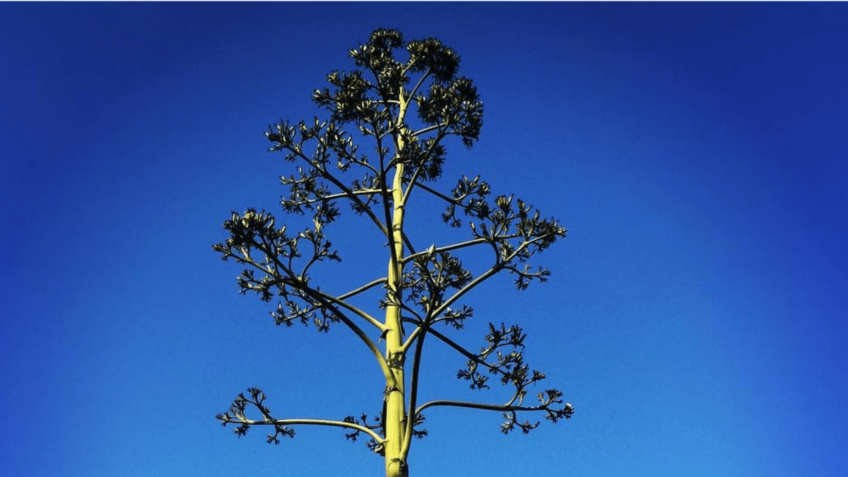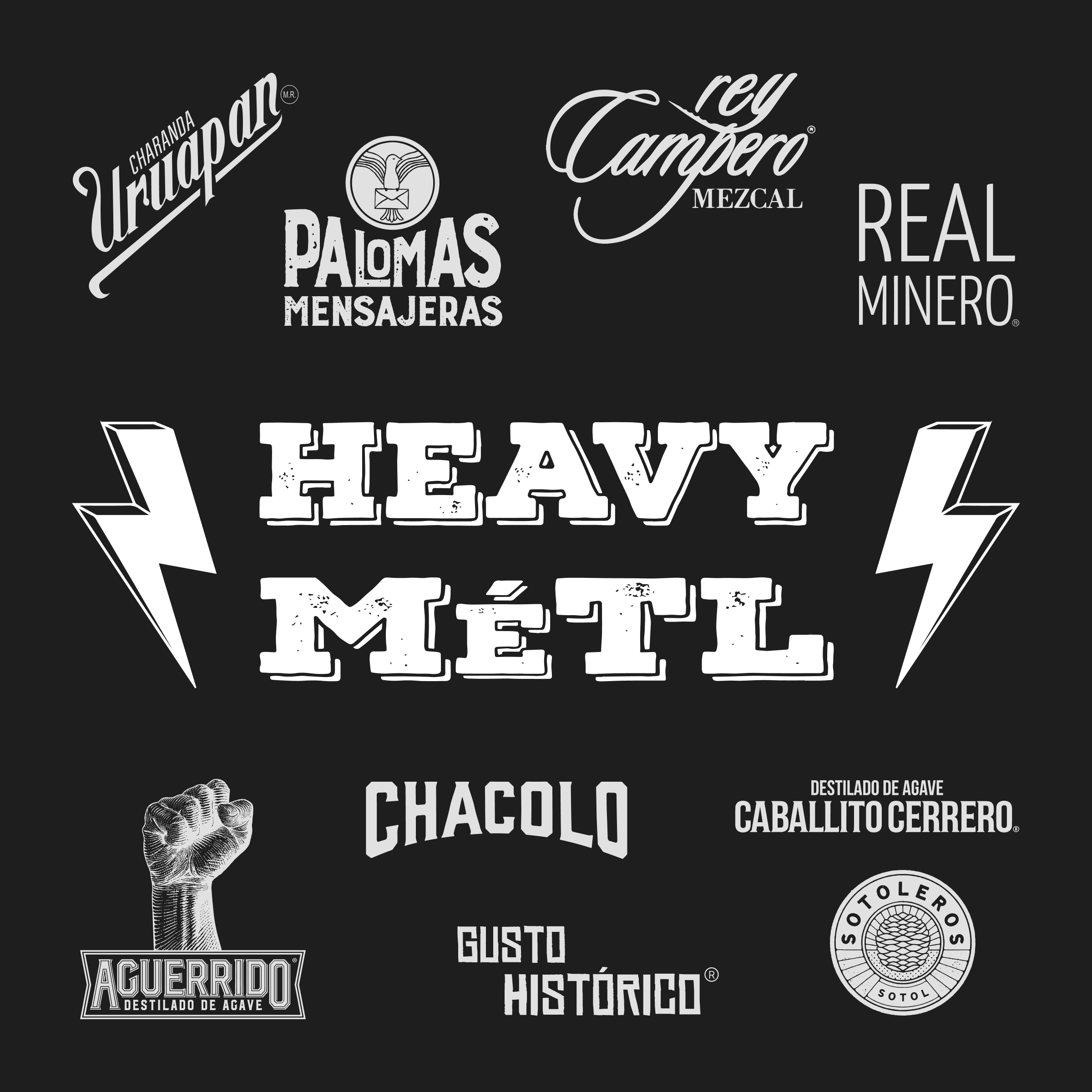The international view of mezcal has changed drastically over the last 10 years. What was once known only as tequila’s crazy, worm-infused uncle, has quickly become a world-renowned spirit. Mezcal ranks on the same level as any of the best wine, cognac, or scotch. Mezcal now brings smiles to faces worldwide, and it supports local economies in Oaxaca and other mezcal-producing states. This growth is a boon for farmers, mezcaleros, and others involved in mezcal production, but the surge in demand has created some unclear conditions for mezcal’s future.
Agave Espadin
The Consejo Regulador del Mezcal (CRM), which is a regulatory commission for mezcal, reports that 85% of mezcal made in 2015 was made with agave Espadin. The remaining 15% of mezcal produced is made with other types of agave, which were primarily harvested from the wild.
Agave Espadin is by far the most sustainable agave used in mezcal. It’s the only agave that is widely cultivated and farmed (with exception of the Blue agave used in tequila, which is also farmed, but almost never used for mezcal). There are some smaller operations that are trying to farm other types of agave. These projects, however, are mostly in their infancy or have shown only mixed results. Because agave Espadin can be farmed, its supply can be somewhat controlled. Keep in mind that the typical agave Espadin takes between 8-10 years to mature before it can be harvested. Long maturation times make forecasting future demand difficult now that mezcal has made it into the international spotlight.
The potential for disease and other environmental factors also put the Agave supply at risk. The agave plant has co-evolved with nectar-feeding bats, and they now share a symbiotic relationship. In many cases bats play a pivotal role in the natural pollination of the agave plant. Agave farmers, however, have found a way around this. Rather than waiting for bats to pollinate the agave, there’s a growing practice of taking clonal shoots from an existing agave, and planting them numerous times. The agave shoots then grow into big agave plants that can be used for mezcal.
The concern is that this practice creates hundreds (and thousands) of genetically identical agave plants over several generations. Cloning like this makes entire fields more susceptible to disease and other growth issues. The great agave shortage in the early 90’s tequila market was caused by similar conditions. Issues with this type of cloning is not unique to agave. The Cavendish Banana, for example, that is currently sold in every supermarket in America is at risk of suffering the same fate.
The good news is that many farmers and producers are aware of this and they’re taking actions to mitigate risk. The Tequila Interchange Project, for example, is working on a Bat Certification program for tequilas and mezcals. Those spirits produced using a certain percentage of agave that was created through natural bat pollination, rather than cloning, would receive a special certification. This program creates some nice incentives that could lead to greater genetic diversity in agave. This diversity would increase the agave populations’ general defense against disease.
Wild Agave
With some increased genetic diversity, agave Espadin may be OK for the future. The fate of wild agave, however, is a very different story. Most wild agave is harvested directly from the countryside, making supply more difficult to control. People drink mezcal made from these different types of agave for myriad reasons. The most common reason is that they taste wildly different from agave Espadin. For example, an agave Arroqueno is completely different from a Tobala, which is completely different from a Cupreata, etc… This is really where the unique expanse of the mezcal world really opens up.
Weather conditions can slow growth of this agave, and over-harvesting can lead to agave deserts (places with no agave, similar to food deserts). Growth and maturity rates vary greatly in these wild agave as well. Some can take 30+ years before they are ready to be harvested, making the sustainable harvest of them extremely important. If they’re over-harvested now, it’ll take another 30 years or more for the supply to replenish.
Fortunately, there are several mezcal brands that produce only small batches of this wild agave mezcal to ensure sustainable cultivation for years to come. Rey Campero, Real Minero, and Wahaka all have really cool sustainability programs. There are other companies that do great work with this as well, but those three are the top that come to mind. If you know of others, please post in the comments below.
Another really cool project is S.A.C.R.E.D., which is an acronym for Saving Agave for Culture, Recreation, Education, and Development. Not only are they helping to replant agave in areas that have been over-harvested, they’re also doing cool things like building libraries and other social-impact projects. We follow the progress of their projects on Instagram. You should too.
We at Mezcal Reviews will put any bottle on our site. That does not mean that we endorse the brand or the practice behind its production. If you find a bottle of Wild Shot or Cat Mezcal on our site, please write an honest review so others will know what they’re purchasing (but keep it clean, we are a family mezcal website). We promote mezcal in general, and we hope that you vote with your pesos, dollars, and euros for the brands that are doing good for the future of the mezcal industry.









AlexButtny
4 years agoHi guys,
I’m a recent member and really enjoying the wealth of information and the reviews.
Rayu Mezcal has a replanting program to replace magueys and attempt a zero impact production.
https://rayumezcal.com/replanting/ (full disclosure I’m involved in Rayu and YuuBaal in a support capacity. I help with the translations and some marketing)
I loved the Bat Certification program you explained. I haven’t heard if that got off the ground. Ant updates since this article from 2017?
I’m going to try to research this, too. I’ll let you know if I find anything new.
Thanks!
Keith
7 years agoSombra Mezcal is targeting the production side of environmental impact. https://medium.com/@yobetts/the-dirty-truth-of-making-mezcal-and-how-we-can-do-better-5fbdbd70e762#.7iy5inu4r
Keith
7 years agoErick Rodriguez. He’s deeply involved in political activism that affect us as consumers. A champion for the small producer and their traditional/ancestral methods of production. An advocate of fair pay for the Mezcalero. To sustain traditional/ancestral production methods, a Mezcalero’s business must thrive, and be lucrative enough to encourage subsequent generations to become involved. A hands-on participant in agave reforestation projects, and a community activist. https://www.facebook.com/Fundacionalmamezcalera
Erick’s Almamezcalera branded small-batch Mezcals and Sotol aren’t available on U.S. retail shelves, but can be experienced at major tasting events, a select few bars & restaurants, and shipped upon request.
JonnyAuthor
7 years agoHey K-huevo! Thanks for the great information on others who are doing great things for the world of mezcal.
Keith
7 years agoMezcal Vago. Tio Rey cultivates what is considered wild agave on his ranch, with many tens of thousands of Tobala and other species newly planted. Mexicano and Tepeztate are just a couple normally wild agave that Aquilino is readying for future planting. Vago is growing Madre Cuixe starter plants from seed, and they have a goal of no wild harvested agave in the not too distant future. This is just the little bit I know about, I’m sure their efforts are more extensive.